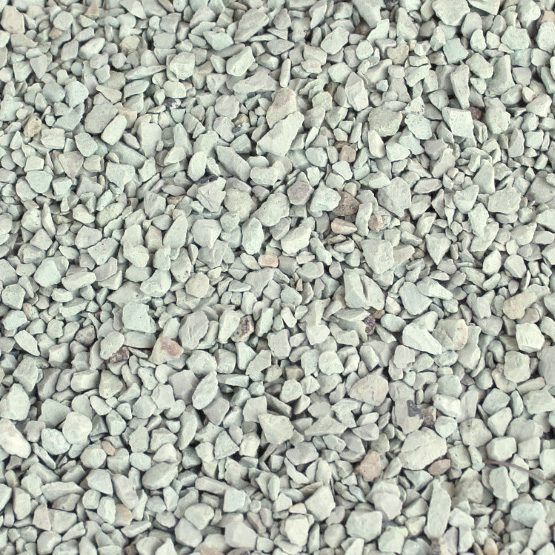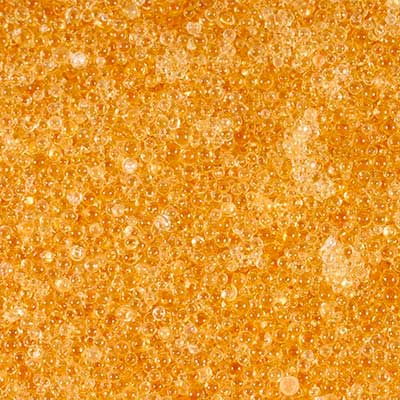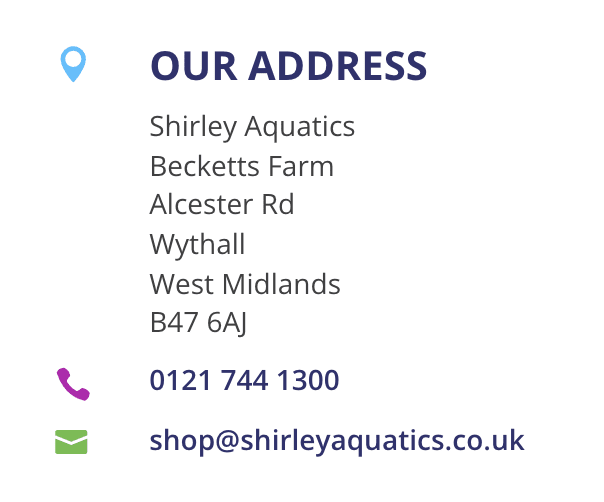Aquarium Essentials – The 3 things your tank must not be without!
20 min read
Or, perhaps more accurately, the 3 things you have to make sure are done properly to ensure a healthy, happy aquarium. #
Contents #
There is so much variety available when it comes to fish keeping. Thousands of species of plants and fish, plain goldfish bowls to enormous planted aquascapes, there are almost endless options. But, there are some things that you must have. Some aquarium essentials that you cannot get away from that ensure the health and happiness of your tank.
There is one thing every single aquarium, planted tank, or aquascape has in common – water. It may sound obvious but you can’t just fill up a tank from your tap in, say, Solihull and expect fish native to the Great Barrier Reef to be just fine and dandy. Taking care of your water is the single most important think you should be doing as a fish keeper. So, how do you do that?
Aquarium Essentials – 1 #
Aquarium Filtration #
We talk about filtration *a lot*. We do this because it’s (you’ve guessed it) one of the aquarium essentials. The number 1 thing for fish keepers enjoying the hobby is the welfare of the plants and animals in their water. If you know all about your filter media, your nitrites from your nitrates, and are a dab hand with dosing then please feel free to skip ahead to the next section.
Still here? Smashing. Let’s get stuck in.
Aquarium filters cover three types of filtration; mechanical, biological, & chemical. These are known as ‘stages’ and are usually in that order. So, a ‘two stage’ filter will likely include mechanical and biological and a ‘three stage’ filter will have all three. A single stage filter may be any of the three. These are usually used to ‘beef up’ one of the stages in an existing filter in a setup.
Mechanical filtration #
Mechanical filtration is the process of straining the physical particles out of your water. There is plenty of debris that builds up in a fish tank that needs to be dealt with – fish waste, uneaten food, dead bits of plant, dust etc. If this isn’t removed from your water it will turn cloudy and you won’t be able to see anything. As well as that the debris can start affecting your water chemistry which will impact on your fish & plants.
Mechanical filtration is the first stage that your aquarium water hits. There are several different types of mechanical filter media to cover all types of setups but the common theme is ‘straining’. Think of it like a sieve. Sooner or later it will begin to clog up. It’s perfectly fine to wash your mechanical filter media, provided you remember two things.
Mechanical filter top tips #
- NEVER, EVER WASH YOUR FILTER MEDIA IN TAP WATER. The best place to wash your filter media is in tank water you’ve removed as part of a water change. Gently submerge the media and give it a few gentle squeezes and ‘swooshes’ (technical term) to get the worst of the debris out.
- DON’T REMOVE ALL OF THE BUILD-UP. Whilst this filter media is technically mechanical it also provides some biological filtration, too. Within the first stage of your filter colonies of bacteria will thrive. This is because the debris your filter is catching provides plenty of food for the bacteria and the moving water provides plenty of oxygen. Lovely stuff. This bacteria is beneficial to your filtration and the water chemistry of your tank in general – so you don’t want to wash it all away!
It will, however, eventually be time to replace your mechanical filter media. You’ll know when to do this because your water flow will be noticeably reduced through the filter even when you’ve just cleaned it. If it is time for a change it’s best to avoid changing your media at the same time as any other actions that can affect bacterial colonies, such as heavy substrate vacuuming. You want as little impact on your colonies as you can get away with.
Biological Filtration #
We touched briefly on biological filtration previously but it is a stage in and of itself. Biological filters come in all shapes and sizes, the key elements are surface area and water flow. You’re providing an ideal home for a colony of more ‘good’ bacteria alongside the smaller ones that will develop in your mechanical stage and substrate.
Words like ‘biological filter’ and ‘bacteria colonies’ may sound a little like something you’d read on laundry detergent or Yakult bottles but don’t worry. In the simplest terms you are making a home for ‘good’ bacteria that will remove the ‘bad’ stuff in your water that will harm your fish and plants.
The ‘good’ bacteria that you’re encouraging breaks down Ammonia and Nitrite in your water and converts them into Nitrate. Nitrate is much less toxic and can be easily removed with products in our Ultimate Nitrate & Phosphate Reducing Bundle;
There are elements of your tank that will naturally house bacteria colonies including your substrate and rocks. Whilst this will often be adequate for a tank with one or two fish in it you’ll soon overwhelm the capabilities of this naturally occurring biological filtration. Also bear this in mind when carrying out tasks like cleaning your substrate. Try to alternate actions that will impact your bacteria so you maintain as much ‘good’ bacteria as possible. So substrate cleaning should be alternated with washing your mechanical filter media. If you simply have to perform both actions together then regular water testing will help you to monitor the impact they have, and regular additions of beneficial bacteria will keep your biological filtration in tip top condition.
Chemical Filtration #
When you start chucking the word ‘chemical’ around things begin to feel a bit more serious but don’t worry! Chemical filtration removes dissolved waste in your water. The most common method for this is using activated charcoal. Activated carbon (charcoal) is extremely porous and so has an enormous surface area. As the water flows over this surface the carbon absorbs the dissolved waste from the water – removing it.
Depending on what you specifically want to remove from your aquarium you may need a different (or additional!) medium. If you have a lot of Ammonia in your tank then Zeolite will remove that.
Zeolite #
Zeolite is made up of aluminium and silica. Zeolite is a volcanic rock that is now often man-made – with near identical results. Being a volcanic rock means that Zeolite is very porous but it works in a different way to activated charcoal. Zeolite works on a principle called ‘ion exchange’. This process exchanges pollutants in the water for particles from the rock. In Zeolite’s case this is sodium. So, water passes over the rock and pollutants (in this case Ammonia) are taken out of the water and replaced with sodium. This exchange will continue for as long as the Zeolite has sodium to ‘swap’.
When used in conjunction with activated charcoal these can remove almost every pollutant from your aquarium. Many brands such as Fluval produce a ready-made mix of the two, Zeocarb is available in a number of handy pack sizes and can be an invaluable tool against the build-up of toxins in your aquarium.

Resin #
Next up is resin. No, not what shady blokes down the pub used to offer you in the 80’s. Resins are widely used in general water softening and purification so it was only a matter of time until they appeared in fish keeping. Like Zeolite it works by ion exchange but is capable of exchanging a wider range of pollutants. Many resin filters are geared towards the removal of specific pollutants by producers so always make sure you check which one it is when purchasing replacements. That little bag of yellowish pieces in your filter? That’s resin. d

Oxide #
Lastly, there is oxide. It might sound odd to say that rusted metal can help but there we are! Both aluminium oxide and iron oxide can lower phosphate levels in your aquarium – this will help control algae in your tank. Be aware if you own a saltwater aquarium you should use ferrous (iron) oxides. There is evidence to suggest that aluminium oxides lead to increased aluminium levels in saltwater.
However, we would always recommend GoPhos as your go-to product for removing phosphates. You may recognise that name – you saw it earlier as part of our Ultimate Nitrate and Phosphate Reducing Bundle (see, we’re not as green as we are cabbage looking!).
Finally – be aware that all chemical filtration mediums will get to a point where they cannot absorb or exchange any more pollutants and will begin releasing them back into your tank. They will need replacing regularly. Some last for weeks, some last for months – so be aware of the timeline of your tank. If you’re happy to continue replacing them then that’s great but we would urge you, if your tank is constantly requiring heavy chemical filtration, to look for a root cause for the issue and sorting that out.
Aquarium Essentials – 2 #
Water Testing #
A big part of sustainable and successful fish keeping is water chemistry and knowing your ‘parameters’. Parameters refer to the lower and upper limits that are acceptable per water chemistry measure. Things like pH (acidity), KH (water ‘hardness’ – how much carbonate you have in your water), ammonia, nitrite, nitrate, and phosphate. Yes, your filtration is in place to handle a lot of this but it is unlikely to be 100% proficient all of the time. As the filtration mediums ‘fill up’ with the bits and pieces they’re removing from your tank they will become less effective and you need to know when that is happening. Starting off with an all-in-one test kit to cover your bases is sensible.
Ammonia #
Ammonia is very toxic to fish and is a killer. It’s typical to see higher than normal Ammonia levels in a tank that is very new and in it’s ‘start up’ cycle but it can also crop up in tanks that aren’t being properly maintained. Not enough water changes, overly clogged and dirty filters, too many fish, and too much uneaten food can also increase Ammonia levels.
Because it’s a big deal Ammonia levels should be checked weekly and, we can’t stress this enough, written down in a log. You should always check for Ammonia if you have a sick or dead fish, too.
pH – Acidity #
The pH of your water will fluctuate over time with evaporation, plant and fish waste, and the hardness of your water all playing a part. That’s fine, natural, and to be expected. Sudden changes of pH, though, can cause fish a lot of stress and quite easily lead to deaths.
You can do a few things to ‘flatten the curve’ of your pH. Firstly, it’s important to know the pH of the water any new fish are coming from so you can effectively acclimate them into your tank without giving them a big (and potentially fatal) shock. Secondly, test the pH of your tank monthly and keep a log of it so you know the range your setup typically operates within. It’s also a good precaution to test every time there is fish illness or death, too.
KH – Water Hardness #
Your water hardness, or KH, effects how swiftly your pH levels will change. ‘Hardness’ of water is measured in how much carbonate is in the water. This carbonate increases the water’s ability to ‘buffer’ changes in pH and slow them down. Over time these carbonates in the water disappear and are used up by the biological filter. As the hardness decreases the likelihood of rapid pH changes increases.
We are in a very soft water area, the water comes out of the tap with little or no hardness. Apart from the effect this can have on pH, the mineral content of your aquarium water is critical not only to the health of your fish but also your biological filter. The filter bacteria need this to reproduce and function properly. Below a certain kH their performance is severely limited, which then starts to impact on other water parameters such as Ammonia.
The alkalinity of the water is its ability to absorb acid. Simply put, if you had an aquarium with a healthy kH and you poured vinegar in (don’t do that by the way!) the pH would drop initially, the kH would then sacrifice itself to buffer the pH back up again. Do the same thing in a tank with zero kH and the pH will plummet and stay there.
But what’s the point in knowing this? You’re never going to pour acid in your tank right? Everything that breathes in your aquarium is pumping acid into the water in the form of dissolved carbon dioxide (carbonic acid). The more fish you have, the more acid gets produced, the more your kH gets depleted. kH is not discussed or acted upon enough in our opinion, it’s a great tool for making sure all is well in your aquarium.
If you notice quicker and quicker changes then test for your KH. If needs be you can add products like API pH UP to increase the alkalinity of your water. This pH adjuster is fast-acting, colourless, easy to use, and will not cloud aquarium water. Because it is phosphate-free and nitrate-free, pH Up pH adjuster will not encourage algae growth.
Nitrite (No2) #
Nitrite is another toxin that will show up a lot when you first set up a tank. This is another reason why it’s a good idea to leave a new tank without fish in it for a few weeks once you’ve set it up. If you’re in the middle of setting up a new tank and want a step by step guide of everything you should know beforehand and what to do during a setup – read our article on Starter Aquariums for 2022.
Nitrite levels will go up and down slightly in your tank over time depending on how many fish you have in there and how much leftover food is hanging around in the tank. Because it is such a big deal it’s sensible to test your Nitrite levels monthly and whenever you have sick or dead fish. If a fish dies unexpectedly it’s also a good idea to test for Nitrite levels once you’ve removed the fish as it may be contributing to the problem.
The only way to rapidly reduce elevated Nitrite levels in your water is by a combination of physical water changes and the addition of nitrifying bacteria – so keeping an eye on it to prevent large, unplanned water changes is a sensible measure.
Nitrate (No3) #
Nitrate, whilst not as toxic as Nitrite, brings with it other problems, namely algae. The biggest issue with Nitrate is that it’s colourless and odourless – so you won’t spot it without testing. You should be aiming for levels of 5 – 10 PPM (Parts Per Million). Anything in the 20-50 range is too high. Lots of fish won’t show any visible signs of distress of Nitrate poisoning until the levels reach above 100 PPM. However, prolonged exposure to levels between 20 – 50 PPM can affect disease resistance, growth, and reproduction.
If your tank Nitrate was to rise to levels exceeding 100 PPM you would see open sores or red blotches on your fish. They would also be lethargic. Sudden deaths in your population would be frequent and new fish added to this environment would die quickly due to shock. Testing is simple. A colour coded water test strip is used that tells you exactly where your water sits on the scale. Test monthly.
Adding a few more plants is a great way of naturally managing your Nitrate levels as plants will utilise some of the Ammonia, Nitrite and Nitrate in your tank – but this should be done in conjunction with regular testing.
For a very thorough explanation of the nitrogen cycle, how ammonia, nitrite, and nitrate all relate to each other, and how to test and monitor your resulting Nitrate levels click here.
Phosphate #
Phosphates build up in your aquarium and encourage the growth of algae. If you have a reef aquarium they can also stop corals from taking in calcium in order to grow. Removing these phosphates is all you need to do to prevent this.
We recommend GoPhos as a very effective phosphate remover. Use GoPhos to initially drop the phosphates in your aquarium to zero. Use 10ml per 100 litres to remove up to 0.3 PPM of phosphates. Repeat this dose every 4 days until your phosphate levels reach zero.
Dropping phosphate levels too quickly can be harmful to corals so monitor your phosphates regularly. If corals show signs of stress, wait 7 days before dosing again. Once your phosphates are at zero, use a maintenance dose of 10ml/200 litres once a week. You may be able to reduce this to once every two weeks, depending on your setup. Use an accurate phosphate test kit to help you.
Aquarium Essentials – 3 #
Lighting #
As you may expect, lighting is not as simple as it may sound when it comes to fish keeping. You’re going to encounter terms like ‘Kelvins’ (the unit of measurement for light) and ‘colour temperature’. Like we always say, don’t panic. Learning the lighting lingo is simple once you know how it’s used.
Lighting itself is an aquarium essential, but it’s also important to understand what kind of lighting will suit you best. There are several factors that will impact on your decision on what lighting you need to use. Size of your tank is the first one – there’s no point just lighting one end of it! How many fish will be in your tank? How many plants? Will it be freshwater or do you fancy having a go at growing corals? Next, and often overlooked, how deep is your water? The depth will determine how bright these lights need to be to be effective throughout your aquarium. Finally, the big one, budget. It is no secret that you can spend a lot of money on lighting. What is often ignored is how much money you can save in terms of running costs for a potentially larger initial outlay.
Why lighting is important #
A freshwater aquarium requires between 8 and 10 hours of light per day. Reef tanks require more like 10 to 12. Remember – lighting a tank is for the fish, not you. The point of the exercise is to try and mimic the natural conditions the inhabitants of your tank would experience in ‘the wild’. Different strokes for different folks, as it were. Too little and plants may die, too much and risk a big ol’ algae bloom.
Not only do your fish require differing amounts of light per species they need different frequencies of light, too. The colour temperature mentioned a little earlier refers to light frequency and how this affects the colour of the light we see. For example, sunlight is taken to measure at 5,500K (Kelvin) and is considered white, a combination of the 7 colours of the rainbow. The lower the Kelvin rating the ‘warmer’ the light – 5,000k would look more yellow, 4,000k would look more red. The higher the Kelvin rating the ‘colder’ the light. 7,500K would look more blue, 10,000K is the typical rating for zenon headlights on cars. Each frequency travels through air and water differently, with blue light travelling and ‘scattering’ the best. This is why the sky and the sea look blue.
Fluorescent #
Fluorescent lights are the most common type of aquarium lighting and have been for a long time. They come in two formats, T8 and T5. T5s are the newer versions and tend to emit a brighter light, are more compact, and last around 25% longer than T8s. Conversely some aquarists prefer T8s and have setups built to house them. A ‘full-spectrum’ bulb has a light range between 5,000K and 6,500K and will cover most of your bases for beginners.
The downside to Fluorescent lighting is that they emit heat as well as light. This will obviously impact on your water temperature. There are methods to manage this such as moving the bulb away from the water to allow the heat to disperse*, or to include a water chiller in your setup. These lights will also ‘drop out’ of their frequency range over time. Standard wear and tear will mean replacing the bulbs every 6-8 months to maintain the perfect frequency. This creates another problem, as disposing of fluorescent bulbs has become more difficult. All Cleair aquariums alongside many other manufacturers switched from supplying fluorescent lighting with their tanks to LEDs some time ago. Some suppliers are even phasing out completely their range of replacement fluorescent bulbs, if you do choose to go this route make sure your size of bulb is going to be available for some time to come
*be aware that any splashes of cold water onto a hot bulb can result in shattering lights which is obviously not ideal.
LED #
LED lights are typically the lights that come included with new tanks these days. Fluval include LED lighting with their Spec and Flex models, for example. LED lighting is being generally adopted as the best way to light an aquarium. This is due to their reliability. They produce steady, consistent light frequencies for longer and require less energy to run. They’re also small and easy to fit into almost any tank setup in the form of strip lights, clip ons, or even suspended above larger tanks. They can be easily configured to emit different frequency settings, they don’t emit enough heat to impact on your water temperature and will last for around 10 years. You can even control them remotely via remotes, apps, and bluetooth!
Soooo…what’s the catch? The initial cost of these lights is higher and, in some cases, significantly higher. Whilst they will last much longer (most claim around 10 years), require much less energy to run, provide consistent, programmable light, and (rather crucially, we think) not randomly explode if splashed – they don’t suit every budget. We recommend you do all you can to provide the best lighting system possible within your budget for your aquarium. If your tank comes with one included – perfect!
Aquarium Essentials – all wrapped up! #
It’s demonstrably reductive to say there’s only 3 ‘aquarium essentials’, it’s a complicated hobby! But so long as you keep these three things in mind and understand them then the other stuff will all stay manageable. If you’re ever in any doubt please feel free to call us or come into store and ask us questions.

Many starter tanks will include these aquarium essentials as a way to keep things simple and easy for a new hobbyist. Getting to grips with things like filtration and lighting in this way is a perfect introduction to fish keeping. Whilst it may not sound like it immediately you may well find yourself fascinated by sump filtration and light frequencies in no time at all. Some hobbyists even move away from fish completely and keep purely planted tanks or reef tanks. Whatever your preference you’ll need to know at least these basics and make sure you understand why these aquarium essentials are, well, aquarium essentials!






